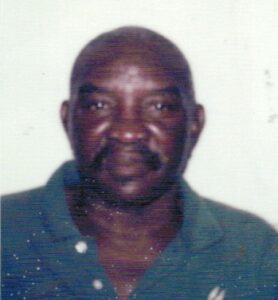
In 2007, former employees of a St. Croix bauxite mining company filed suit, claiming they’d been exposed to dangerous dust and may develop cancer or respiratory ailments. On Wednesday, 17 years since the initial suit, attorneys for the current owners of what was once Martin Marietta Alumina told the Virgin Islands Superior Court it was too soon for a trial, according to court records.
Since 2011, more than 37 former employees of Martin Marietta or its related companies have sued for fear of toxic dust exposure. At least 19 of these men and women are now dead, with a child or spouse carrying on the suit in their name. The seemingly simple process can be difficult, according to court records.
In 2008, Gorgonius Jones sued his former employer at the plant where bauxite ore was refined into alumina. Jones died Nov. 9, 2011, at 70 years old. Seven months later, his wife filed a motion to replace him on the suit, but no one notified Lockheed Martin — which by then owned Martin Marietta — until 2015, according to court records. It would take two more years and page after page of legal filings to have her name added to the suit.
Over the years, the suits were lumped into three groups, or master cases, known as Alumina, Halliday, and Charles.
Two months ago, attorneys for the plaintiffs contended the time for pretrial wrangling was nearing its close and asked the Virgin Islands Superior Court to convene a status conference.
Attorneys for Lockheed Martin responded Wednesday, asking the court to that find moving toward a trial was “premature, unripe, and improper given the procedural history and posture of the Halliday cases,” according to court records.
Representing many of the former employees, attorney Russell Pate said the case was far from unripe.
“In 17 years, a child is born, crawls, walks, talks, has all his first milestones, goes to school, plays sports and finishes high-school and goes off to college, work or the military. Here, in 17 years, there’s been no trials and over half of my three dozens clients have died. Defendants say the cases are not yet ripe for trial; but to me these cases are overripe, rotten now, the fruit is spoiled, oozed and liquefied, eaten by flies and worms and dried into a shell of nothing. Waiting 17 for years justice is rotten and empty justice,” Pate said by email.
Reached at his St. Croix office Wednesday, Lockheed attorney Kevin A. Rames didn’t answer questions about what legal questions remained to work out after 17 years, instead referring to another related case. Rames said the answer could be found in a 6,673-page document detailing the legacy of Milton A. Burt’s case as well as reams of ancillary Lockheed Martin business.
Burt was a maintenance worker at the alumina refinery from 1967 to 1985 and again from 1988 to 1995. In July 2019, he was diagnosed with pneumoconiosis, an occupational lung disease Johns Hopkins Medicine has said was usually caused by breathing in certain kinds of dust particles that damage lungs. It takes years to develop.
Burt alleged the aluminum plant knew of the dust’s danger the entire time he worked there but neither warned him nor gave him protective gear. He also claimed the safety department was chronically understaffed.
“It never had an industrial hygienist on staff, which was crucial to ensure compliance with government regulations and good safety practices, particularly in such a hazardous environment,” Burt’s attorneys wrote.
In almost every instance, Lockheed Martin replied to Burt’s assertions with a version of: “Lockheed Martin lacks knowledge or information sufficient to form a belief as to the truth of the allegations of Paragraph 1 and, therefore, denies those allegations.”
Lockheed also said it wasn’t their fault.
“While denying all averments of negligence, fault, or liability, Lockheed Martin states that Plaintiff’s alleged injuries or damages resulted solely from the acts or omissions of persons or entities for which Lockheed Martin is neither liable nor responsible. Such acts or omissions on the part of others constitute an independent and intervening proximate cause of such injuries or damages,” Rames wrote.
In the Wednesday filing, Rames said the Virgin Islands Supreme Court needed to rule on Workers’ Compensation Act issues and statute of limitations defenses in the Burt case before proceeding toward trial for the rest.
Lockheed successfully argued Burt, who wanted a jury trial and damages for his injuries, had filed his suit four months beyond the statute of limitations. In December 2022, Burt’s claim was scuttled.
The Martin Marietta Corporation was an American company founded in 1961 through the merger of Glenn L. Martin Company and American-Marietta Corporation. Martin Marietta Aluminum, Inc. and Martin Marietta Alumina, Inc. owned and operated the St. Croix alumina plant from 1972 until 1984. In 1995, it merged with Lockheed Corporation to form Lockheed Martin.
It was not known when the Virgin Islands Supreme Court might rule.


